Did you know that ancient Roman art influenced not only the art of their time but also the art and culture of future generations? From sculpture to architecture, the Romans left a lasting impact on the artistic world. In this article, we will delve into the fascinating realm of ancient Roman art, uncovering its rich history, remarkable craftsmanship, and enduring legacy.
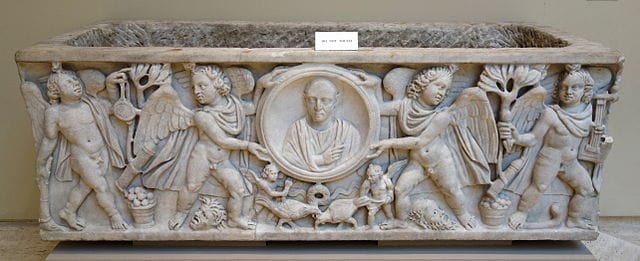
Key Takeaways:
- Ancient Roman art had a profound influence on subsequent artistic movements.
- Ancient Roman art encompasses sculpture, painting, architecture, and mosaics.
- Greek art played a significant role in shaping Roman artistic traditions.
- Roman sculpture is renowned for its lifelike realism and attention to detail.
- The Roman architecture showcases impressive engineering feats and iconic structures.
The Ancient Roman Civilization: A Brief Historical Overview
The Roman civilization emerged from humble beginnings along the banks of the Tiber River and eventually evolved into one of the greatest empires in history. Known for their disciplined and strategic military, the Romans conquered vast lands across Europe, Africa, and Asia. In addition to conquest, the Romans showcased remarkable engineering and architectural prowess, constructing iconic structures like the Colosseum and the Pantheon. Their contributions extended beyond military might and engineering, encompassing art, culture, and governance.
| Ancient Roman Art and Culture | Ancient Roman Artists | Roman Art History |
|---|---|---|
| Ancient Roman art reflects the grandeur and sophistication of the Roman civilization. From sculptures to architecture, it embodies the cultural heritage of the time. | Given their diversity and talent, ancient Roman artists excelled in various artistic mediums such as sculpture, painting, architecture, and mosaics. | Roman art history spans centuries, with its roots in the early days of Rome and its lasting influence on modern art and culture. |
The Romans’ artistic achievements played a significant role in shaping their identity and influencing subsequent civilizations. The inspiration drawn from Greek and Etruscan traditions infused ancient Roman art with a unique aesthetic. Roman artists meticulously depicted emperors, gods, everyday life, and mythical tales, showcasing their mastery of artistic techniques.
“Ancient Roman art is a testament to the creativity and ingenuity of the Roman civilization. Through their artistic endeavors, the Romans captured the essence of their time and continue to inspire generations.”
One of the most renowned examples of ancient Roman art is their sculpture. Roman sculptors exquisitely portrayed the human form, capturing both realistic details and idealized beauty. Emperors’ busts, in particular, served as symbols of power and authority. The lifelike qualities and impressive craftsmanship of Roman sculptures have fascinated art enthusiasts for centuries.
Furthermore, Roman architecture stands as a testament to their engineering prowess. The Romans developed innovative techniques and constructed monumental structures that still awe us today. The use of arches, vaults, and domes in structures like the Colosseum and the Pantheon showcases the Romans’ mastery over architectural design and construction.
The ancient Roman art and civilization remain influential to this day, with its art and culture continuing to inspire and captivate. By delving into the historical context and examining the artistic achievements of the Romans, we gain a deeper understanding and appreciation for their enduring legacy.
Ancient Roman Art: An Overview
The ancient Roman art, spanning from 753 BC to 476 AD, remains an enduring testament to the rich cultural heritage and artistic prowess of the Roman civilization. Drawing inspiration from both Greek and Etruscan traditions, ancient Roman art encompasses a diverse range of mediums, including sculpture, painting, architecture, and mosaics.
Roman sculptures are celebrated for their exceptional craftsmanship and attention to detail. They capture the naturalistic nuances and powerful presence of emperors, as well as idealized beauty. These sculptures served as visual representations of authority and were a testament to the grandeur of Roman society.
Ancient Roman architecture, on the other hand, showcases remarkable engineering marvels. The Romans pushed the boundaries of construction with iconic structures such as the Colosseum and the Pantheon. These architectural wonders exemplify the innovative techniques and grandiose vision of Roman architects, who demonstrated their mastery in both design and execution.
Ancient Roman paintings provide glimpses into everyday life, mythological narratives, and religious symbolism. These vivid and expressive works of art reflect the values, beliefs, and cultural nuances of Roman society. Through intricate brushstrokes and vibrant colors, Roman painters conveyed a myriad of emotions and stories, enriching the visual tapestry of the Roman world.
Finally, the use of mosaics in ancient Roman art combined aesthetics with practicality. Mosaics adorned the floors and walls of buildings, showcasing intricate patterns, elaborate designs, and detailed imagery. They added a touch of opulence to public spaces and private residences, both showcasing the wealth and cultural sophistication of ancient Rome and contributing to the richness of ancient Roman art.
In summary, ancient Roman art is a multidimensional reflection of Roman culture and history. Through sculptures, paintings, architecture, and mosaics, the Romans expressed their ideals, celebrated their achievements, and left a lasting artistic legacy that continues to inspire and captivate audiences around the world.
Influence of Greek Art on Roman Art
Greek art played a significant role in shaping the development of ancient Roman art, influencing its style, subject matter, and techniques. Roman artists admired and emulated the realistic style of Greek sculptures, seeking to capture the intricacies of the human form with lifelike precision. They incorporated elements of Greek architecture into their own designs, integrating columns, pediments, and other architectural features to create monumental structures.
However, while the Romans borrowed from Greek art, they also infused it with their unique touch, resulting in a fusion of styles that kept many Greek traditions alive while giving rise to distinct ancient Roman art styles. The Romans expanded the artistic vocabulary inherited from the Greeks, combining it with their own cultural sensibilities to create a vibrant and evolving art scene.
“Greek art was the foundation, and ancient Roman art was the continuation and advancement of the Greek artistic tradition.”
“Greek art adorned temples, celebrated gods, and depicted heroes. Roman art, on the other hand, decorated public spaces, honored emperors, and reflected the daily lives of ordinary people.”
One fascinating aspect of the influence of Greek art on ancient Roman art is the incorporation of Greek mythology. Both Greek and Roman artists drew inspiration from the rich tapestry of Greek mythological tales, weaving them into their sculptures, paintings, and mosaics. These mythological narratives provided artists with a rich source of symbolism, allowing them to explore themes of power, love, heroism, and divine intervention.
Examples of Greek Influence on Roman Art
One notable example of Greek influence on ancient Roman art is the Arch of Titus, erected in Rome to commemorate the Roman Emperor Titus’ military victories, including the Siege of Jerusalem. The arch incorporates Greek architectural elements, such as the triumphal arch design, while also depicting scenes from Roman military triumphs and the spoils of war.
| Roman Art | Greek Art |
|---|---|
| Sculptures focused on realism and individuality, portraying emperors, politicians, and citizens. | Idealized sculptures depicting gods, goddesses, and mythological heroes. |
| Architectural designs included monumental structures like the Colosseum and the Pantheon. | Architectural designs encompassed temples, theaters, and stadiums. |
| Paintings depicted scenes from daily life, mythology, and religious symbolism. | Paintings centered around mythological narratives and religious themes. |
| Mosaics adorned floors and walls, combining aesthetics with practicality. | Mosaics were used to decorate floors and walls, showcasing intricate patterns and designs. |
The influence of Greek art on ancient Roman art highlights the interconnectedness of cultures throughout history. It showcases how artistic traditions can be adopted, adapted, and transformed, resulting in unique expressions of creativity. By studying the influence of Greek art on ancient Roman art, we gain a deeper understanding of the evolution of artistic styles and the enduring impact of ancient civilizations on the world of art.
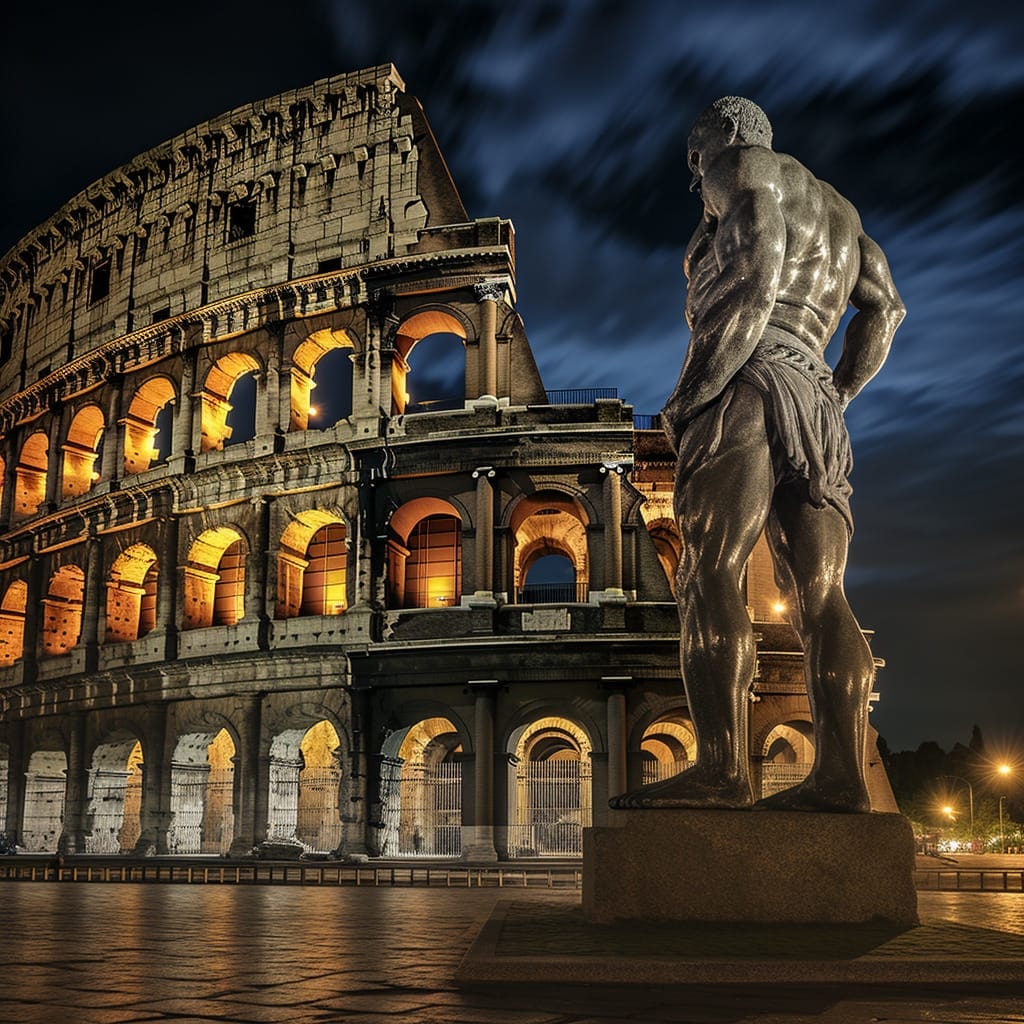
Roman Sculpture: A Closer Look
Roman sculpture is renowned for its lifelike realism and meticulous detail. Artists skillfully captured the expressions, poses, and textures of clothing, creating powerful depictions of emperors, gods, and mythological figures. Roman sculptures served as visual manifestations of authority and power, with idealized proportions and timeless beauty.
While influenced by Greek sculpture, Roman sculptures had their own distinct characteristics. Roman sculptors often depicted emperors in triumphant poses and excelled in portraiture, capturing individual personalities. The techniques used by ancient Roman artists transformed cold stone into vibrant, expressive masterpieces that have stood the test of time.
The Realism and Detail of Roman Sculpture
The realism and attention to detail in Roman sculpture are truly remarkable. Artists painstakingly sculpted intricate facial features, capturing the emotions and inner thoughts of their subjects. Every wrinkle, curve, and dimple was carefully rendered, breathing life into the statues. The lifelike textures of flowing garments added to the sense of movement and gave the sculptures a sense of dynamism.
“Roman sculpture was a visual language that told stories of power, mythology, and historical events. These highly realistic and expressive artworks not only showcased the skill of the artists, but they also served as a form of propaganda, reinforcing the authority and prestige of the ruling class.”
One notable style in Roman sculpture is verism, which focuses on portraying the realistic features of individuals, including the effects of aging. This style aimed to convey the essence of the subjects, capturing their individual personalities and character traits. Veristic portraits were often created using bronze, a material that allowed for greater detail and realism.
Another prominent style in Roman sculpture is idealization, particularly in depictions of emperors and gods. Roman sculptors crafted statues with idealized proportions, emphasizing strength, power, and beauty. These sculptures reflected the Roman ideals of leadership and divinity, showcasing a society that revered its leaders and aspired to greatness.
Influence of Greek Sculpture on Roman Sculpture
Greek sculpture played a significant role in the development of Roman sculpture. The Romans admired Greek art and sought to emulate its beauty and technical mastery. They studied Greek sculptures, adopted their techniques, and incorporated Greek mythology and subject matter into their own works.
However, Roman sculptors introduced their own innovations and adapted Greek styles to suit their own artistic sensibilities. While Greek sculptures often focused on depicting gods, goddesses, and mythical heroes, Roman sculptures had a broader range of subjects, including historical figures and individual portraits. Roman sculptors also showcased a preference for intricate details and naturalism, bringing a unique perspective to their art.
Distinct Styles in Roman Sculpture
Roman sculpture encompasses various styles that evolved over time, showcasing the diversity and creativity of ancient Roman artists. Some notable styles include:
- Early Republican Style: This style developed during the early years of the Roman Republic and was characterized by its simplicity and idealized proportions.
- Augustan Classicism: This style emerged during the reign of Augustus, the first Roman emperor. It drew inspiration from Greek art and featured harmonious proportions and lifelike details.
- Baroque Style: Developed during the reign of Emperor Antoninus Pius, this style emphasized dynamic poses, deep drapery folds, and heightened emotional expressions.
These distinct styles reflect the evolving tastes and artistic expressions of ancient Roman society, capturing the essence of different historical periods and cultural influences.


Differences between Roman and Greek Sculptures
When examining the art of ancient Rome and ancient Greece, distinct differences between Roman and Greek sculptures emerge. These variations encompass style, subject matter, and even the materials used. Understanding these contrasts allows us to appreciate the unique artistic expressions of each civilization.
Style:
Roman sculptures are renowned for their more realistic portrayals of human figures. Artists aimed to capture the individuality and naturalistic details of their subjects. The emphasis was on replicating the physical attributes and expressions as accurately as possible, creating lifelike representations. On the other hand, Greek sculptures tended to idealize the human form. Artists sought to depict an idealized version of beauty, often emphasizing harmonious proportions rather than realistic qualities.
Subject Matter:
Roman sculptures encompassed a wide range of subjects, including emperors, historical figures, and individual portraits. These artworks aimed to portray the human experience, reflecting the importance of individuals in Roman society. In contrast, Greek sculptures frequently depicted gods, goddesses, and mythical heroes. The Greek pantheon and its rich mythology served as a wellspring of inspiration for Greek artists, leading to the creation of iconic sculptures that immortalized these divine and heroic figures.
Materials Used:
Roman sculptures were crafted from various materials such as marble and bronze. Marble, in particular, was highly prized for its durability and ability to be intricately carved. Roman artists utilized the natural qualities of these materials to create stunning sculptures that showcased their skill and craftsmanship. In contrast, Greek sculptures primarily employed marble as the material of choice. The Greeks valued the purity and radiance of marble, believing it to be the most suitable material for their artistic endeavors.
These distinctions between Roman and Greek sculptures contributed to the development of unique artistic styles within each civilization. While Roman sculptures emphasized realism, showcasing the individuality and historical significance of their subjects, Greek sculptures sought to embody ideal beauty and depict mythical narratives. Both civilizations left an indelible mark on the art world, with their sculptures serving as enduring testaments to their cultural and artistic achievements.
Famous Roman Sculptures
Roman sculpture is renowned for its rich artistic heritage, and throughout history, there have been numerous famous masterpieces that continue to captivate audiences to this day. These sculptures not only showcase the exceptional talent of ancient Roman artists but also provide a glimpse into the historical and cultural significance of the Roman civilization.

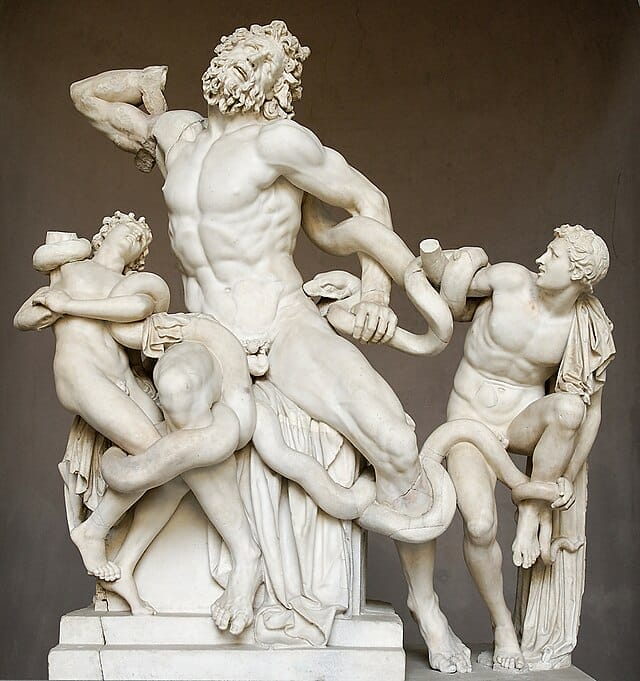
Laocoön and His Sons
The Laocoön and His Sons is a marble sculpture that depicts a tragic scene from Greek mythology. Created by the sculptors Agesander, Athenodorus, and Polydorus, it portrays the priest Laocoön and his two sons being attacked by sea serpents. The sculpture is beloved for its lifelike expressions of anguish and agony.

Augustus of Prima Porta
The Augustus of Prima Porta is a bronze sculpture of the Roman emperor Augustus, which has become an iconic symbol of power and authority. It portrays Augustus in a regal pose, wearing military attire and adorned with intricate details that symbolize his accomplishments and divine status.
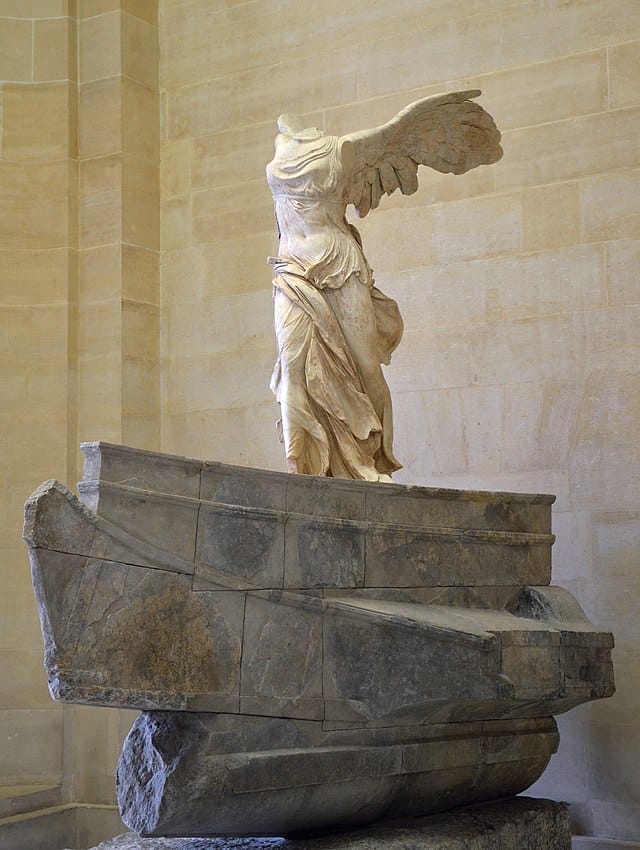
Nike of Samothrace
The Nike of Samothrace is a marble sculpture that depicts the Greek goddess Nike, also known as the Winged Victory. This masterpiece showcases dynamic motion, with the figure appearing to descend from the heavens. The intricate drapery details and sense of movement contribute to its timeless beauty and artistic significance.
These sculptures, among others such as the Apollo Belvedere, the Discobolus, and the Dying Gaul, serve as testaments to the skill and creativity of ancient Roman artists. Each sculpture holds deep artistic value and provides an opportunity for further exploration into their historical contexts, the craftsmanship involved, and the broader significance they hold within Roman society.
Roman Architecture: Engineering Marvels
Roman architecture stands as a testament to the extraordinary talent and ingenuity of the Roman civilization. Inspired by Greek architecture and influenced by subsequent artistic movements, Roman architects showcased their exceptional engineering skills and meticulous attention to detail. The result was a breathtaking collection of structures that exemplify the grandeur and innovation of Roman architecture.

Iconic examples of Roman architecture include the Colosseum and the Pantheon. The Colosseum, an amphitheater in Rome, is a masterpiece of Roman engineering, showcasing the intricate use of arches, vaults, and concrete construction. Its immense size and sophisticated design allowed for the grand spectacle of gladiatorial contests and various public events.
Another architectural marvel, the Pantheon, continues to awe visitors with its magnificent dome and harmonious proportions. Originally a temple dedicated to all the gods of ancient Rome, the Pantheon is renowned for its innovative use of a concrete dome, which remains the largest unsupported dome in the world. Its enduring architecture and sublime interior space illustrate the Romans’ pursuit of perfection and their skillful manipulation of architectural elements.
Aside from these iconic structures, Roman architects also focused on practicality and functionality in their designs. The Romans constructed elaborate aqueducts to transport water to their cities, ensuring the essential resource was readily available to the population. These aqueducts showcased the Romans’ mastery over-engineering challenges, utilizing arches and precise calculations to transport water over long distances.
Furthermore, the Romans built an extensive road network that connected their vast empire, facilitating trade, communication, and the movement of armies. These roads were constructed with remarkable precision and durability, using a layered approach that included foundations, paving stones, and drainage systems. The Appian Way, one of the earliest and most famous Roman roads, stands as a testament to their efficient infrastructure development.
Roman Architecture Styles
Roman architecture encompasses various styles that evolved over time, each influenced by different cultural and artistic trends. Let’s explore some of the notable architectural styles in ancient Rome:
| Architectural Style | Description |
|---|---|
| Classical Style | Inspired by Greek architecture, the classical style emphasizes proportion, symmetry, and the use of columns and pediments. Examples include the Colosseum and the Temple of Jupiter Optimus Maximus. |
| Romanesque Style | Emerging during the Middle Ages, Romanesque architecture features thick walls, rounded arches, and robust pillars. Structures like basilicas and fortifications exemplify this style. |
| Renaissance Style | During the Renaissance period, Roman architecture experienced a revival, incorporating classical forms with new ideas. Notable examples include St. Peter’s Basilica and Palazzo Farnese. |
These architectural styles highlight the dynamic evolution and cultural influences that shaped Roman art and culture throughout history.
Exploring Roman Architectural Styles
Roman architecture is a testament to the ingenuity and artistic prowess of the ancient Roman civilization. Over time, various architectural styles emerged, each reflecting the changing cultural influences and artistic tastes of the time. Studying these architectural styles allows us to delve deeper into the diversity and innovation of ancient Roman art and culture.
The Classical Style
The classical style of Roman architecture draws inspiration from Greek architecture and emphasizes symmetrical proportions, columns, and pediments. This style is characterized by grandeur, harmony, and balance. One of the most iconic examples of the classical style is the magnificent Pantheon in Rome, renowned for its imposing portico and domed rotunda.
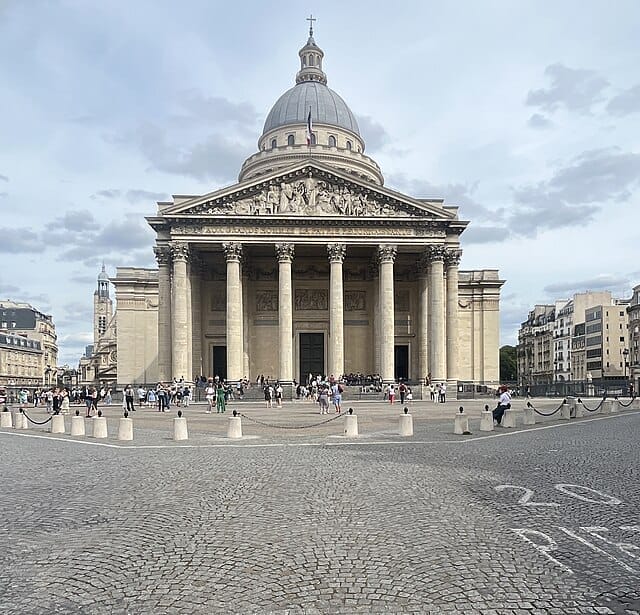
Romanesque Architecture
Romanesque architecture emerged during the Middle Ages as a distinct architectural style characterized by thick walls, rounded arches, and robust pillars. It showcased a sense of strength and solidity, often seen in fortresses, castles, and churches. A notable example of Romanesque architecture is the Basilica of Saint-Sernin in Toulouse, France, known for its impressive dimensions and intricate stone-carved decoration.
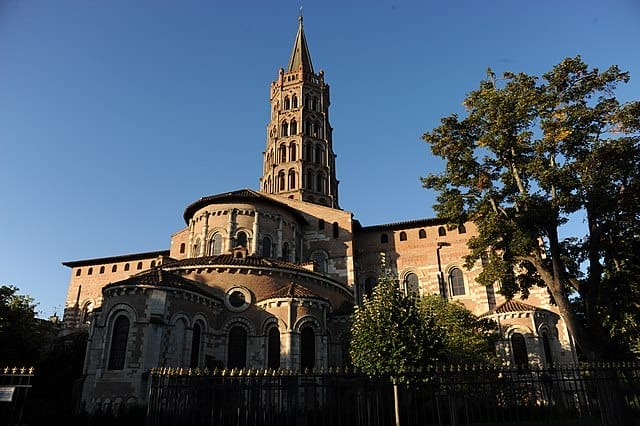
Renaissance Architecture
The Renaissance period witnessed a revival of classical forms infused with new ideas and techniques. Roman architects, inspired by the ancient Greeks, sought to recreate the glory of ancient Rome. Renaissance architecture emphasized proportion, symmetry, and the use of classical elements like columns, pilasters, and domes. The iconic St. Peter’s Basilica in Vatican City is a stunning example of Renaissance architecture, designed by renowned architects such as Bramante, Michelangelo, and Bernini.
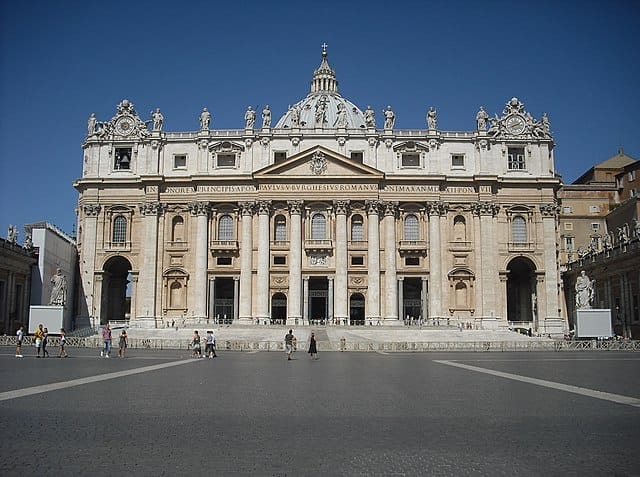
Each architectural style reflects the artistic and cultural movements of its time and leaves a lasting impact on the world. Roman architecture continues to inspire architects and designers today, serving as a testament to the enduring legacy of the ancient Roman civilization.
Roman Architecture and Aqueducts
Roman architecture is not only characterized by its grandiose structures but also by its remarkable engineering achievements. One of the most impressive engineering feats of the ancient Romans is the construction of aqueducts. Aqueducts were elaborate water transportation systems designed to bring fresh water from distant sources to the cities throughout the Roman Empire.
These aqueducts utilized arches, a hallmark of Roman architecture, to convey water over long distances. The mastery of arch design allowed the Romans to create aqueducts that spanned valleys, rivers, and even mountain ranges. The gravity-powered system ensured a steady flow of water to supply the needs of the growing Roman cities.
The aqueducts not only provided an essential water supply but also became a symbol of Roman engineering ingenuity and urban development. They allowed the Romans to flourish and built thriving cities that were the epicenter of culture, commerce, and power.
Aqueduct Structures and Components
The construction of aqueducts involved a complex engineering process. The Romans used a combination of tunnels, channels, and elevated sections to transport water to its destination. The main components of an aqueduct system include:
- Source: The source of water was typically a natural spring or a river.
- Catchment: A reservoir or collection basin was constructed to collect and store the water before it entered the aqueduct system.
- Channel: The water was then channeled through a network of trenches or tunnels.
- Arch: Arches were used to carry the aqueducts over valleys and other obstacles, maintaining a consistent gradient for the flow of water.
- Piers: Piers provided support and stability to the arches.
- Distribution: Finally, the water reached its destination, where it was distributed to the Roman baths, fountains, public and private buildings, and even private homes.
The aqueducts were a testament to the Roman mastery of both architecture and engineering. They were not only functional but also exhibited aesthetic beauty, blending seamlessly into the landscape.
Examples of Roman Aqueducts
| Aqueduct | Location | Length (km) | Height (m) | Years of Operation |
|---|---|---|---|---|
| Aqua Appia | Rome | 16.4 | 19 | 312 BC – 4th century AD |
| Aqua Claudia | Rome | 69 | 50 | AD 38 – 52 |
| Aqua Augusta | Naples | 61 | 25 | AD 1 – 5th century |
| Aqua Virgo | Rome | 20.4 | 26 | 19 BC – present |
These are just a few examples of the many aqueducts built by the Romans. Each aqueduct was a testament to the Roman commitment to innovation and urban development. They continue to inspire awe and admiration for their engineering excellence.
“The Roman aqueducts are a testament to the ingenuity and engineering prowess of the ancient Romans.”
Exploring the architectural and engineering marvels of Roman aqueducts deepens our understanding of the Roman world. They stand as a testament to the enduring legacy of ancient Roman art and culture.
Conclusion
Ancient Roman art is a majestic testament to the grandeur and sophistication of the Roman civilization. The lifelike sculptures and architectural marvels of ancient Rome continue to captivate and inspire audiences worldwide. The fusion of Greek influences with Roman innovation created a unique artistic tradition that has left an enduring impact on the world.
By exploring the intricate details, historical context, and distinctive characteristics of ancient Roman art, we gain a deeper appreciation for the cultural heritage that echoes through the centuries. Roman sculpture, with its lifelike realism and exquisite detail, showcases the power and beauty of emperors and gods. Roman architecture, with its engineering marvels and attention to detail, exemplifies the ingenuity and vision of Roman architects.
Ancient Roman art encompasses not only artistic expression but also the values and ideologies of Roman society. It reflects the Romans’ reverence for power, authority, and the divine. The enduring legacy of ancient Roman art can be seen in the architecture of modern cities, the influence it has on contemporary sculpture, and the inspiration it provides to artists across the globe. As we delve into the wonders of ancient Roman art, we uncover a rich tapestry that continues to shape and inspire the art world today.
FAQ
What is ancient Roman art?
Ancient Roman art encompasses various art forms, including architecture, sculpture, painting, and mosaics, created during the civilization of ancient Rome from 753 BC to 476 AD.
What influenced ancient Roman art?
Ancient Roman art was heavily influenced by both Greek and Etruscan traditions. Greek art shaped the style and subject matter of Roman art, while Etruscan art influenced Roman architecture and religious practices.
What are the defining characteristics of Roman sculpture?
Roman sculpture is known for its lifelike realism, meticulous detail, and emphasis on portraying emperors, gods, and mythological figures. Roman sculptures often exhibit idealized proportions and capture individual personalities.
How are Roman sculptures different from Greek sculptures?
Roman sculptures tend to have more realistic portrayals compared to the idealized representations of Greek sculptures. Roman sculptures often depicted emperors, historical figures, and individual portraits, while Greek sculptures focused on gods, goddesses, and mythical heroes. Additionally, Roman sculptures were crafted using materials like marble and bronze, while Greek sculptures primarily used marble.
What are some famous Roman sculptures?
Some famous Roman sculptures include the Laocoön and His Sons, the Augustus of Prima Porta, and the Nike of Samothrace. These masterpieces showcase the skill of ancient Roman artists and hold significant artistic value.
What is the significance of Roman architecture?
Roman architecture is renowned for its grandeur and innovation. It encompasses various styles that evolved over time, influenced by Greek architecture and later influencing Renaissance architecture. Roman architects showcased their engineering prowess and attention to detail through structures like the Colosseum and the Pantheon.
What are the different architectural styles in ancient Rome?
Ancient Roman architecture includes classical styles inspired by Greek architecture, Romanesque architecture characterized by thick walls and rounded arches, and Renaissance architecture that revived classical forms with new ideas. Each style reflects changing artistic tastes and cultural influences.
How did the Romans utilize aqueducts in their architecture?
Aqueducts were elaborate waterworks constructed by the Romans to transport water to their cities. These engineering marvels used arches to convey water over long distances, ensuring a consistent supply of fresh water throughout the empire.
Ancient Roman art is a majestic legacy that reflects the grandeur and sophistication of the Roman civilization. It has left an enduring impact on the world, inspiring artists and art enthusiasts throughout history.
Source Links
- https://www.ricksteves.com/watch-read-listen/video/tv-show/roman-art
- https://www.atxfinearts.com/blogs/news/what-was-ancient-roman-art
- https://www.pbs.org/video/rick-steves-europe-ancient-roman-art-DJR8gm/
